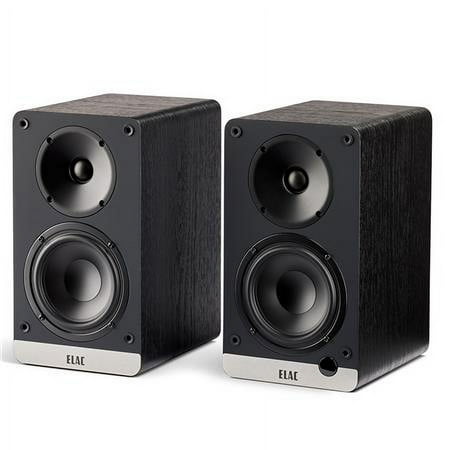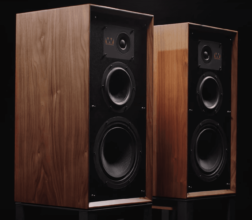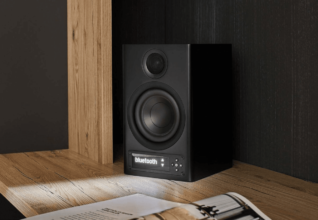ELAC Debut ConneX DCB41 Powered Speakers Review
ELAC’s take on the powered speaker segment may be small, but Ed Selley reckons it’s packed with the right stuff. Read our ELAC Debut ConneX DCB41 Review.
As a product category, powered speakers have been around for years but the decline in physical media usage has really kick started it into becoming a significant part of the affordable end of the market as – assuming they have the right inputs – they’re impressively self-contained. For all the romance of affordable separates and their upgradeability, powered speakers give enormous value for money that is hard to beat.
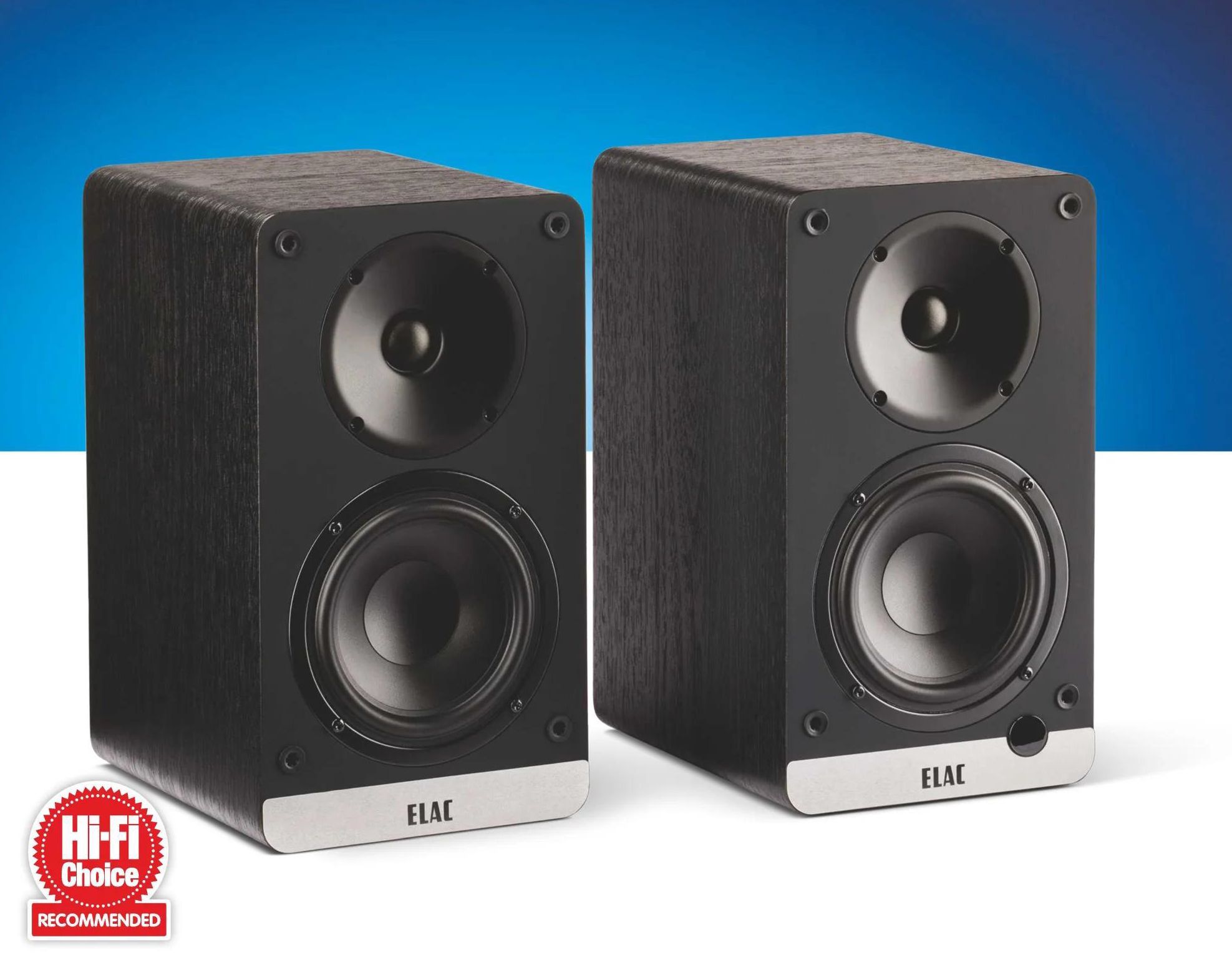
DETAILS
| Weight | Primary: 3.4kg, Secondary: 2.9kg |
| Dimensions (WxHxD) | 140 x 244 x 203mm |
| Features | – 50W per channel amplification |
| – 24-bit/96kHz compatible | |
| – Inputs: RCA line/MM phono; optical; USB; HDMI ARC | |
| – Bluetooth | |
| Distributor | Hi-Fi Network Ltd. |
| Website | elac.com, hifi-network.com |
ELAC is no stranger to affordable speakers and the DCB41 is at least partly related to its Debut range of passive models. The configuration is largely in keeping with others in this category. A main speaker contains the inputs and amplification for both cabinets and outputs to a wholly passive partner via a run of speaker cable. Each speaker is built around a 19mm soft dome tweeter partnered with a 114mm polypropylene mid/bass driver. Amplification comes courtesy of a Class D amp that is quoted as delivering 50W of power per channel, albeit with no impedance quoted.
This latter figure in particular is not especially large, but ELAC has coaxed a claimed ‘in room’ lower response of 50Hz out of it by using a relatively large slot port at the rear of the cabinet. This results in lower levels of noise than a conventional circular port, but ELAC has doubled down on this by introducing an S-shaped profile inside to slow the air down before it even reaches the port. Bass is then further boosted by an EQ system that ELAC calls XBass Enhancer. I’ve never been the most enthusiastic proponent of such systems, but it can at least be switched off.
Where the ELAC sets itself apart from key rivals is the connectivity. The expected inputs are all present and correct. There is an optical input, supported by RCA phono (which, like a few other models can become a moving-magnet phono stage via a rear panel switch) and Bluetooth inclusive of aptX (although it’s not clear if AAC is supported). You can also connect a subwoofer via a dedicated output. This core connectivity is further augmented with USB-B, which works on a driverless basis to 96kHz, and an HDMI ARC connection.
This puts the ELAC in a very strong position compared with key rivals because it has an answer to pretty much every real-world use and the HDMI connection gives much better integration with a TV than an optical input would. ELAC then goes on to supply a good-quality remote handset and all the cables you might reasonably require as well. There are some welcome little touches that make it easy to live with too. A small window on the powered speaker shows input via a multi-colour LED and there is a physical volume control on the back. Also very handy is a small switch that lets you select whether the powered speaker is the left or right channel to make cable management simpler.
The overall appearance is impressive too. Build quality is extremely good for the asking price and the small size should ensure the cabinets don’t take up much room. Four finishes are available, with conventional black ash and walnut wraps joined by a rather bolder blue and orange. My gripes are limited to the use of physical lugs for the suppled grilles and the lack of a dedicated wall mount (although third-party ones fit well enough).
Sound quality
Something that the DCB41 does early on in testing and continues repeatedly across its various inputs is redress some of my dislike for bass EQ software. As noted, you can turn the XBass Enhancer off, but despite the name suggesting it’ll have the subtlety of an airstrike its effect on the low end is extremely benign and gives this dinky cabinet surprising bass heft. This ensures that Little Barrie and Malcolm Catto’s Steel Drum has the weight it needs. Catto’s jazz-based timing means that there are passages with frequent multiple kick drum strikes and the ELAC keeps the speed and intensity of this drum work intact.

The upper registers are also extremely impressive. The handover between the two drivers is seamless and the Debut ConneX DCB41 balances top-end detail and refinement to ensure compressed and poorly recorded content is listenable while still delivering a useful step up in quality when higher quality material is played. Bluetooth offers a more than respectable performance with aptX-capable sources in particular warranting the term ‘hi-fi.’
This is the single most flexible and well-specified way of spending £
There’s more to give, though. Connecting a diminutive Wiim Mini streamer to the analogue input, creates a smart speaker that sounds unreasonably good for a whisker over £ That bass extension and refinement is combined with a stereo image that isn’t enormous, but knocks any one-box rival into the weeds. The manner in which it handles the good-natured bluesy rock of Seasick Steve’s Sonic Soul Surfer is good enough for you to forget the relatively terrestrial origins of the hardware and simply enjoy the music as it effortlessly flows. As the HDMI input is the main choice for TV connection, there is still the optical input spare for additional needs.
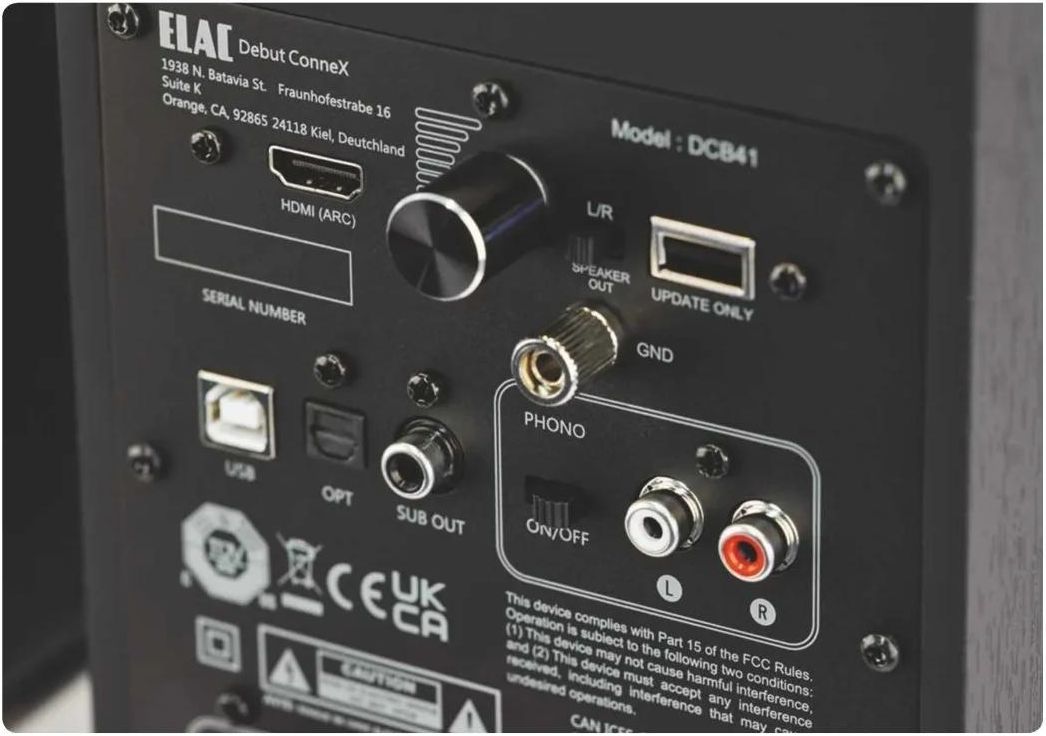
And that HDMI connection works like a charm. The ELAC effortlessly betters most built-in TV speakers and, thanks to turning on at the same time as the screen and syncing being controlled by its remote, it’s a doddle to use as well. Performatively, there is no difference in signal quality between this and the optical connection, but the user experience is a world away.
Against this, the phono stage is merely okay (given how many affordable turntables have their own phono stages these days, I query how often it will actually be used), but it is more than up to the task of getting you going. One thing that the ELAC does effectively is ensure that when you do switch the phono stage out of the circuit, it genuinely feels like it is bypassed rather than powered-down.
How it compare
The ELAC costs over £ more than the formidable Q Acoustics M20 and there’s not much between them in terms of sound quality. Where the DCB41 gets its winning punches in is the spec. Both devices are similarly equipped, but the ELAC’s HDMI ARC connection makes it vastly simpler to use with a TV. The wider selection of finishes that the DCB41 is available in and its smaller size also mean it’s likely to be easier to integrate into a domestic space. The result is a product that is slightly more costly than the M20, but a quite formidable all-rounder.
Conclusion
The result of this considerable collection of attributes is that this is not only the most capable powered speaker I have tested anywhere near this sort of price, but it represents about the single most flexible and well-specified way of spending £ that I can currently envisage. The DCB41 is able to hold its own over Bluetooth and then goes on to offer a selection of additional inputs that leaves most similarly priced rivals looking very limited in comparison. As the resulting speaker also sounds good, looks great and is an absolute doddle to use and live with, it’s hard not to see this as a bit of a star that is very much worth seeking out
OUR VERDICT
When you purchase through links on our site, I may earn an affiliate commission. Here’s how it works.
ELAC Debut ConneX DCB41 Powered Speakers | Deep unboxing and review
hxosplus.



